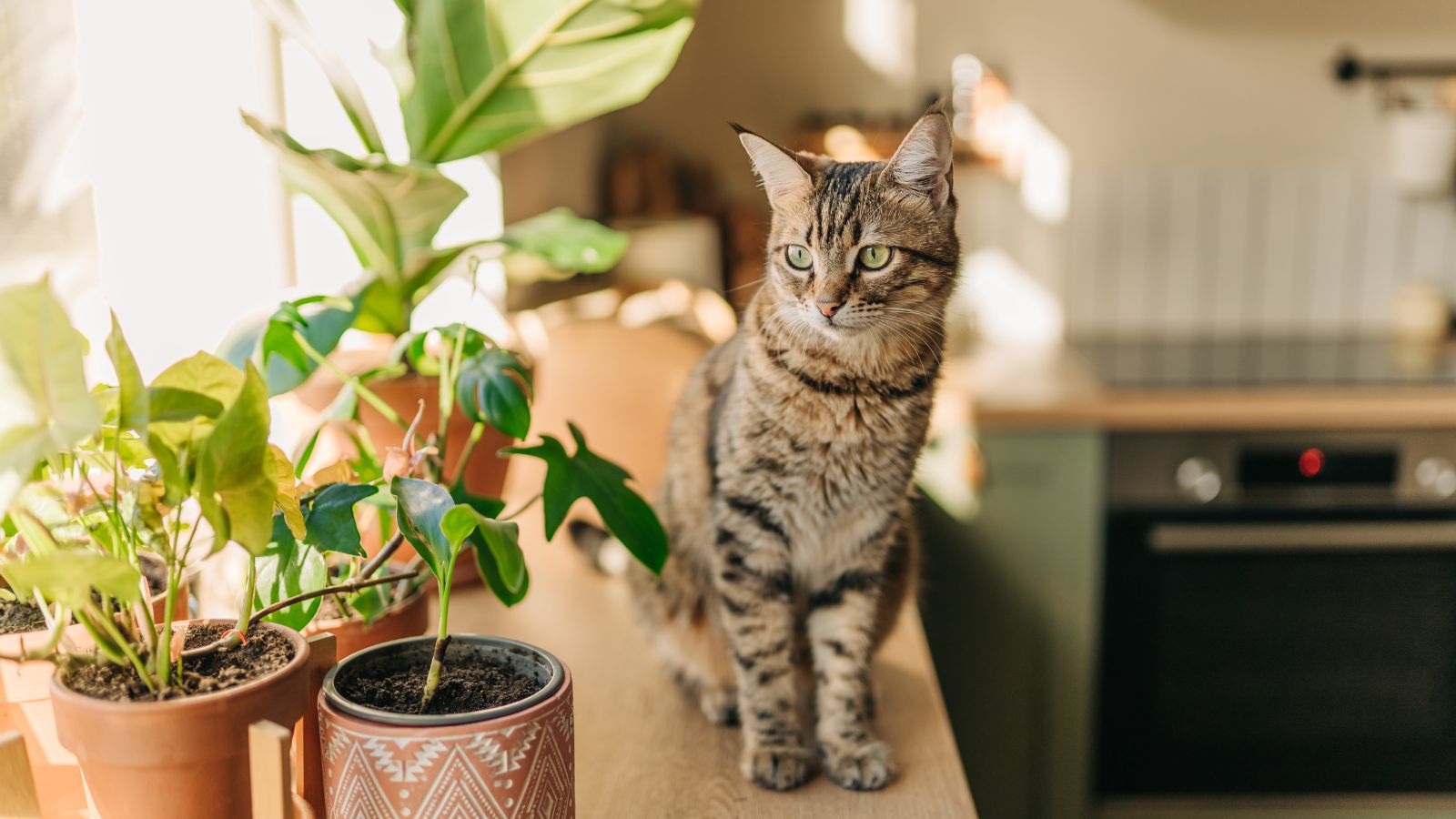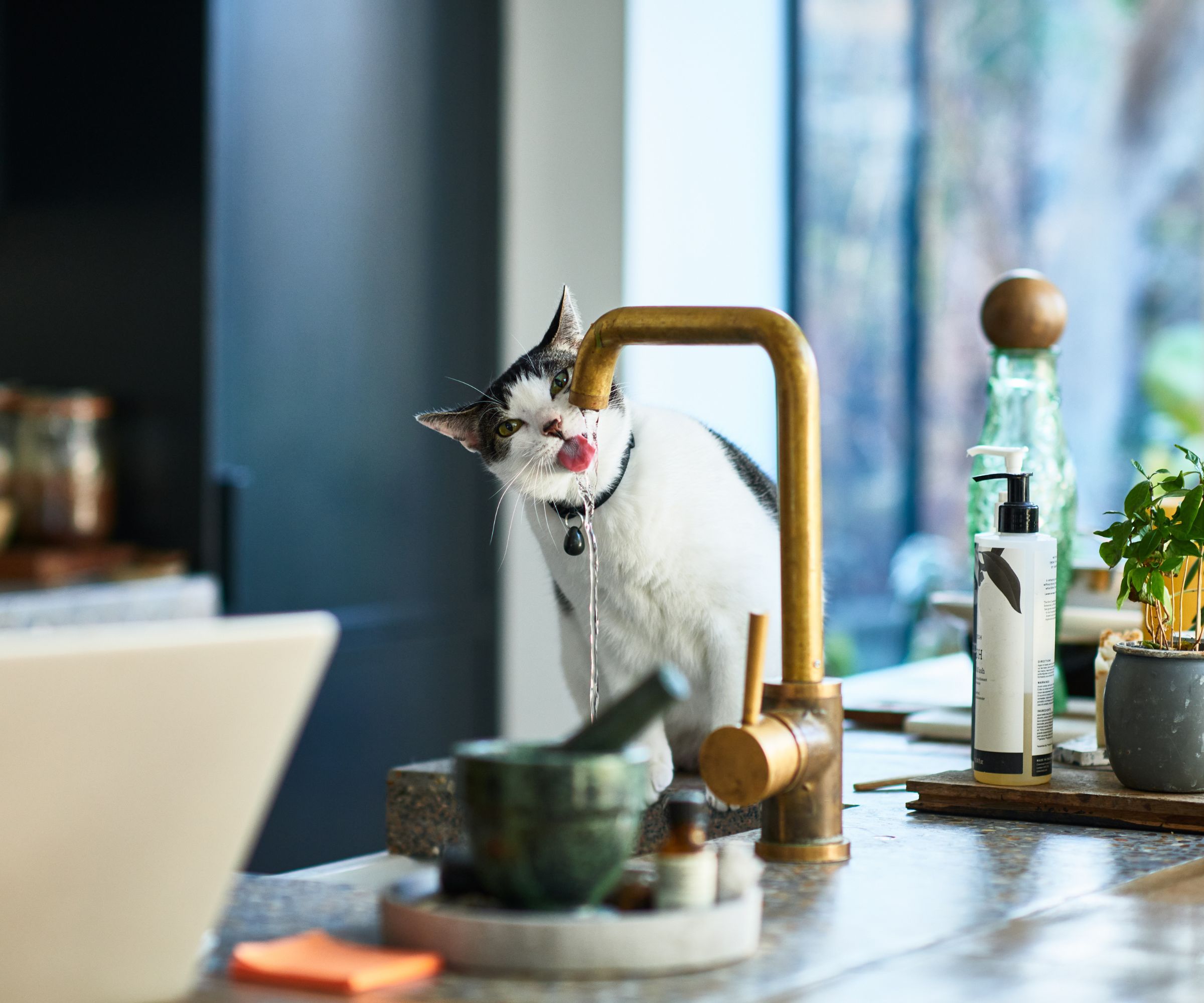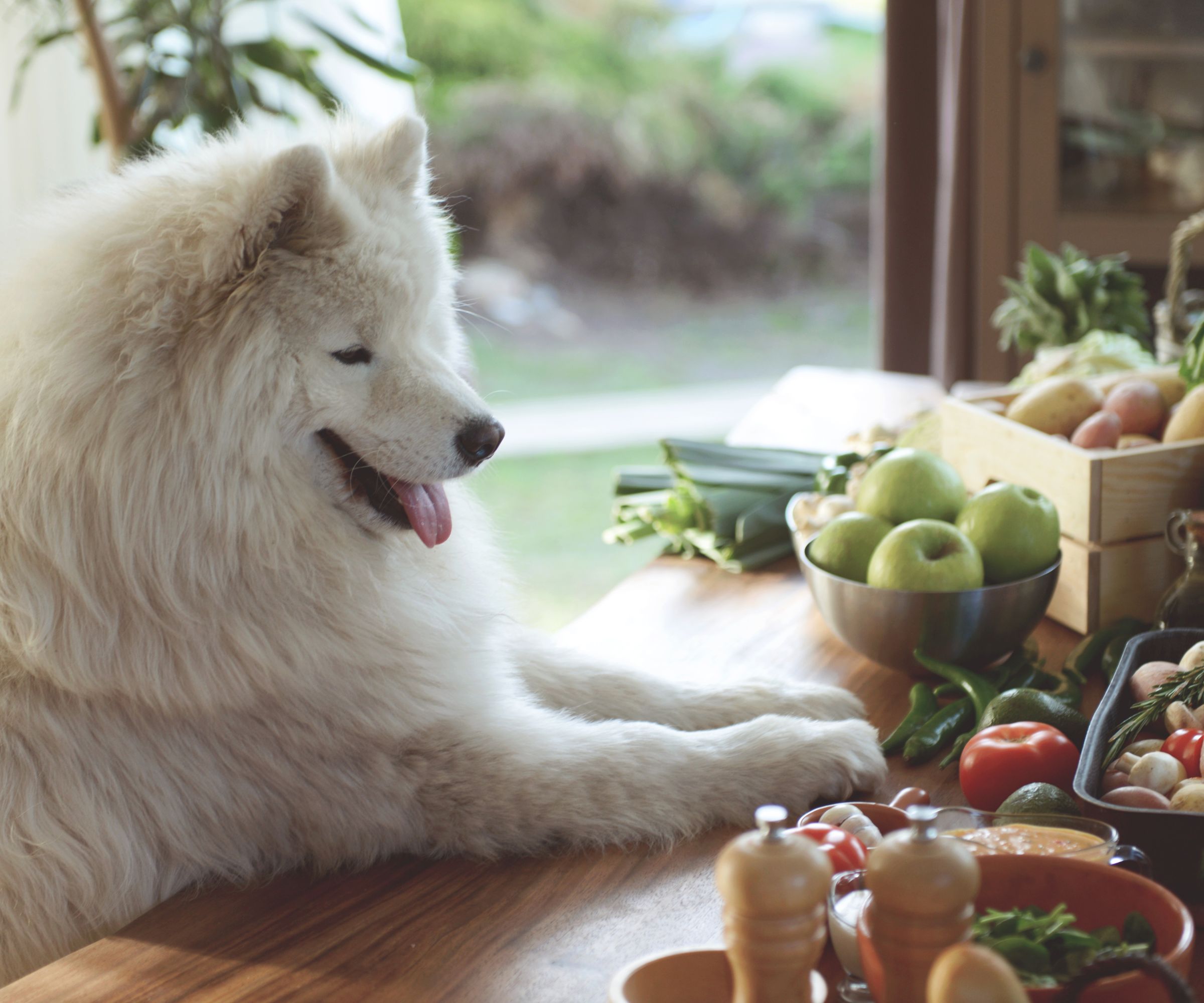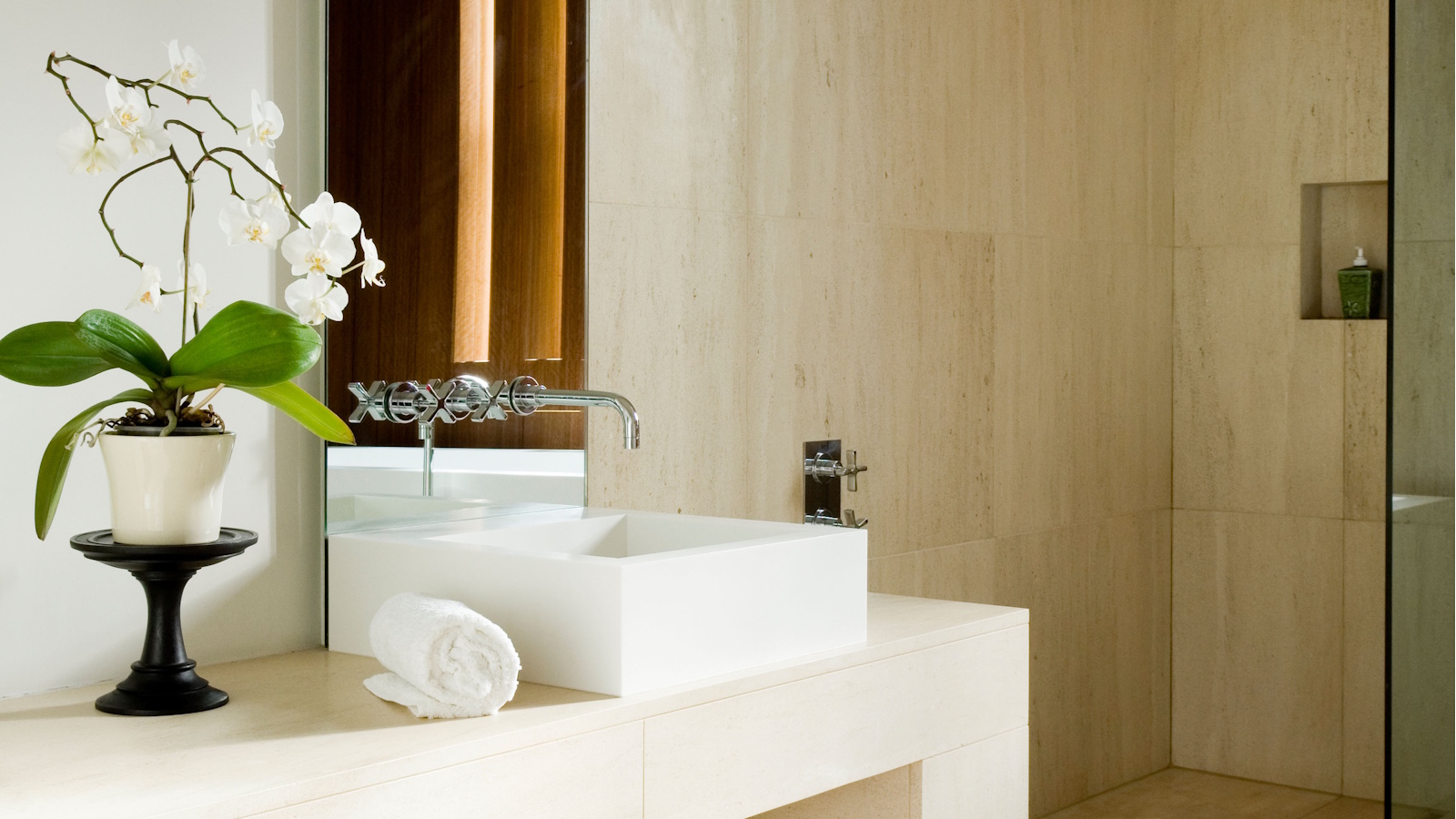How to keep pets off counters – expert tips for cleaner countertops
Stop pets trampling your counters with these training tips to keep them off for good


When we share our homes with our pets it is understandable to want to share all of our furniture with them too. One area you probably want to keep pet-free, however, is your kitchen countertops.
No matter how often we bathe our pets, allowing them on counters can be incredibly unsanitary, not to mention how frustrating it is to come downstairs and find your snacks or leftovers demolished before you have the chance to put them in the fridge – or worse, all over your floor.
Luckily, pet trainers and experts have perfected the art of keeping animals off counters to avoid constant frustration when living with pets.
How to keep pets off counters
While we all want to know how to keep a clean home when you have pets, it is best to remember that your pets don't have the same concept of do's and don'ts as we do. They see your kitchen countertops as just another level of your home to explore – especially if the remains of last night's roast chicken are up there. Being aware of this fact as you begin the training process will help make the experience smoother and less stressful for you and your animal.
With that in mind, this is how to prevent your cats and dogs from partaking in a spot of midnight countertop exploration.
How to keep cats off of countertops

'Cats can be tricky to train, especially in comparison to dogs, but it can be done with some smart reinforcement and gentle deterrents,' says Eloisa Hife, CTO at Bark Like Meow.
When starting, it is important to note that cats do not always recognize punishment as connected to their actions. Instead, they will see you as simply being mean to them and not being sure why, leading to further behavioral issues or timidness. Instead, you should focus on deterring them from jumping up in the first place using scent, Eloisa suggests:
‘Cats despise citrus, so strategically placed lemon peels or orange rinds can create an olfactory no-go zone, or opt for naturally scented citrus cleaners that boast the added benefit of banishing bad kitchen smells. Bonus points for ditching those harsh chemical cleaners – your nose will thank you too.’
Method Citrus Multi-Purpose Spray | View at Amazon
Method cleaning sprays are strongly scented and are designed with furry friends in mind, making them perfect for cleaning with pets, making your home smell nice, and deterring your pets' from unwanted behaviors.
'Establishing why your cat is jumping up onto your counters can help you to remove triggers for the behavior and make your home pet friendly,' continues Joey Lusvardi, a feline expert and certified cat behavior consultant at Class Act Cats: ‘The best solution is removing anything that your cat may find tempting on the counter. That means wiping off food crumbs after eating and removing objects they may want to knock off to play with. This removes some of the cat’s desire to go up on the counter as it won’t be that interesting.
'You also want to provide the cat with an acceptable, alternative place to climb nearby. If you have cabinets above your counters, let your cat climb up to the top of the cabinets so they have a cozy place that is higher up than your counters. The extra height will appeal to your cat’s instinct to climb, and because it allows them to go up higher, it will be more inviting to them than your counters.'
An alternative is putting a perch or cat tree nearby,' Joey continues. 'You can gently encourage your cat to go to the cat tree by praising them or giving them a treat when they are on it. This can take some time to work as you need to repeat it, but as your cat learns they get rewarded for going to an acceptable spot, you’ll begin seeing them spending more time there.'
If you need speedier results, sprinkling a little bit of catnip or silver vine powder on the cat tree can act as a cat attractant. Both of them induce good moods in cats and will be naturally reinforcing as well, so your cat will build a positive association with the cat tree.

Class Act Cats is a feline behavior consultation service run by Certified Cat Behavior Consultant Joey Lusvardi based in Minneapolis, Minnesota. He offers cat behavior help to reduce the stress and uncertainty of having a cat with behavioral concerns.
'Finally, contrary to popular belief, cats respond as well to positive reinforcement as dogs do, so load up on the treats,' Joey recommends. The trick is to focus on praising and rewarding them for getting off the counter and being on the ground.
‘This encourages acceptable behavior. If you need some help with this, a method of training called clicker training can be used to teach them what to do. It works by reinforcing a wanted behavior by teaching your cat that the sound of a clicker is associated with them getting a reward.
‘You then click and reward them for getting down off the counters. It works quickly for cats that are food motivated if using treats, but even cats that don’t care as much about treats can be trained using praise, play, or another reward.’
53" Kimmel Cat Tree | View on Wayfair
Was $94.99 | Now $86.99 on Wayfair
Cat trees come in a variety of designs to suit your home aesthetic. We love this rustic brown 'multifunctional cat condo' because it features two padded perches and a fluffy hammock - perfect for stylish felines.
How to keep dogs off of countertops

'Dogs are far easier to train than cats and usually have fewer desirable reasons to jump onto counters, making this unwanted behavior a little easier to target,' assures Sean Prichard, president and head canine fitness coach at Pant & Wag.
In most cases, dogs make their way onto counters because they associate this space with food. ‘Humans often prepare the dog's food on the countertop and then serve the dog near the countertop. This is in addition to the human preparing their own food on the countertop. From the dog's perspective, the countertop must seem like a magical place where all the food in the universe originates from,’ Sean shares.
‘For a species that is generally very food motivated and always hungry, exploring the counter may be irresistible.’
Sean recommends altering your routine to prepare and serve their food elsewhere in your home to break this association. ‘This also means getting the dog out of the kitchen when preparing human food, never leaving food on the counter, and cleaning the counter thoroughly as soon as you are done using it,’ he adds.
‘Disassociating the counter with food won't work immediately, so it's important to have an 'off' or 'leave-it' command when you see your dog snooping around the counter to stay happy and healthy at home with your dog. Over time the dog will learn nothing is interesting on the counter and will have no reason to jump on it or surf it.’
Sean Prichard is the president and Head Canine Fitness Coach of Pant & Wag. He founded PAW to help busy pet owners meet the exercise demands of their pets. He has quickly become a leading expert in canine fitness and training.
FAQs
Does tin foil keep cats off of counters?
A popular hack to keep cats off of counters involves covering them in tin foil to gently scare them when they jump up onto the surface. This approach certainly works, as the sound and feel of the unexpected foil make them jump backward. However, if you do not keep this consistent, it can train the cat to just expect the foil and the method to fail. What’s more, scaring your cat is not a good way to train them and can lead to further behavioral issues or timidness, so it is best to try other options first to help deter them.
Is it bad for my pets to be on my counters?
While it is simple to clean a counter down when a pet jumps on it, it is best to keep your animals away from your kitchen counters, especially where you cook and prepare food. This is mainly for health reasons, as our pets carry bacteria, dirt, and possible parasites even when they are bathed and treated regularly – not to mention the fur they lose on an everyday basis. It can also be frustrating trying to prepare food for you and your animal if they are always jumping up and getting in the way, potentially causing accidents. All in all, it is best to train them to avoid this.
If your pets are prone to taking over your countertops, it is a good idea to block them out of the kitchen when you are not at home so that they are not indulging in the behavior when you are not around to correct them. If this is not possible, make sure to always clean the kitchen when you go to prepare food just in case they have been counter-surfing when you haven't been looking and prevent contamination until the behavior is retrained.
Next, learn how to keep your cats out of your Christmas tree.
Sign up to the Homes & Gardens newsletter
Design expertise in your inbox – from inspiring decorating ideas and beautiful celebrity homes to practical gardening advice and shopping round-ups.

Chiana has been at Homes & Gardens for two years and is our resident 'queen' of non-toxic living. She spends most of her time producing content for the Solved section of the website, helping readers get the most out of their homes through clever decluttering, cleaning, and tidying tips. She was named one of Fixr's top home improvement journalists in 2024.
-
 Elton John's home fragrance collection is 'a tribute to the optimism and beauty that spring brings' – and it's under $45 to scent your home this April
Elton John's home fragrance collection is 'a tribute to the optimism and beauty that spring brings' – and it's under $45 to scent your home this AprilSlatkin + Co. teamed up with Elton John to create a home scent inspired by his historic Woodside Estate – they're beautiful, affordable, and selling quickly
By Sophie Edwards
-
 My orchid's leaves haven't wrinkled since moving it to this exact spot in my home – it's the easiest hack to keep these flowering houseplants hydrated
My orchid's leaves haven't wrinkled since moving it to this exact spot in my home – it's the easiest hack to keep these flowering houseplants hydratedDehydrated orchids can perk up again in the environment of a bathroom
By Tenielle Jordison

